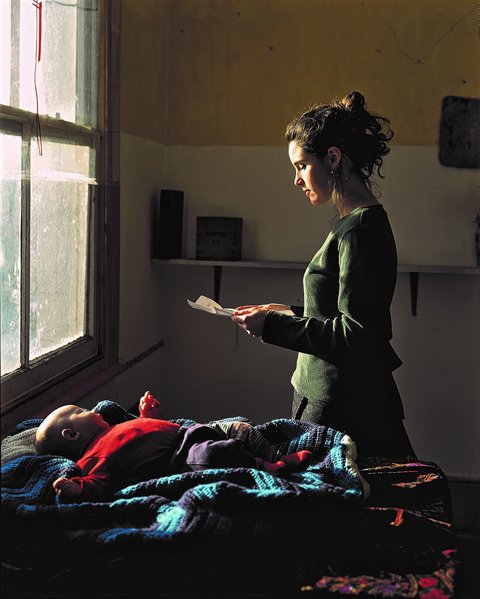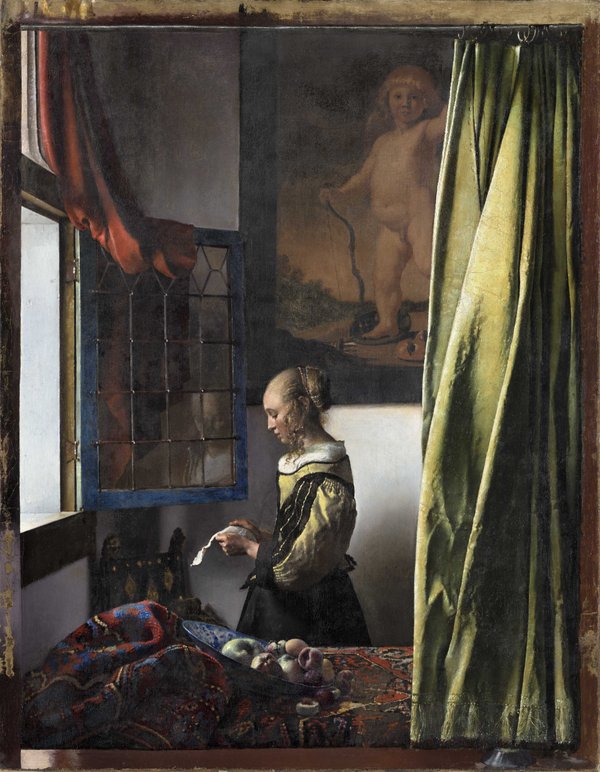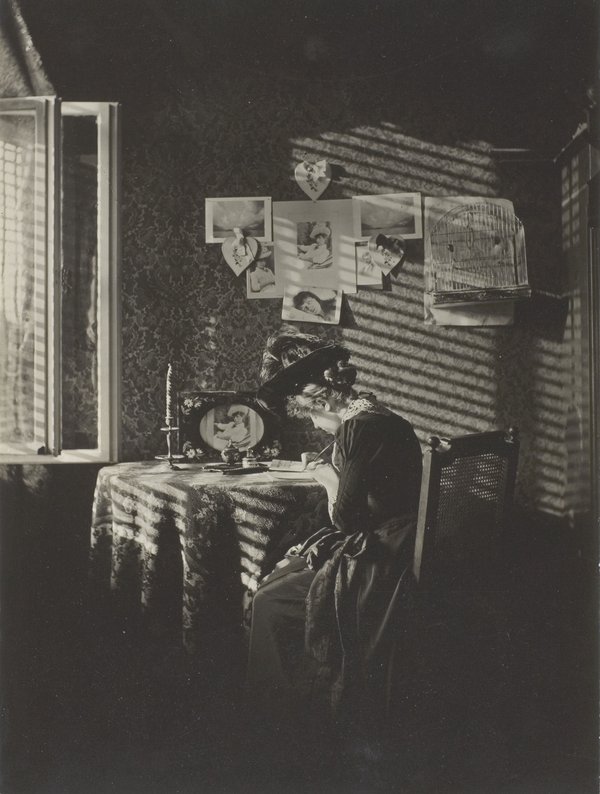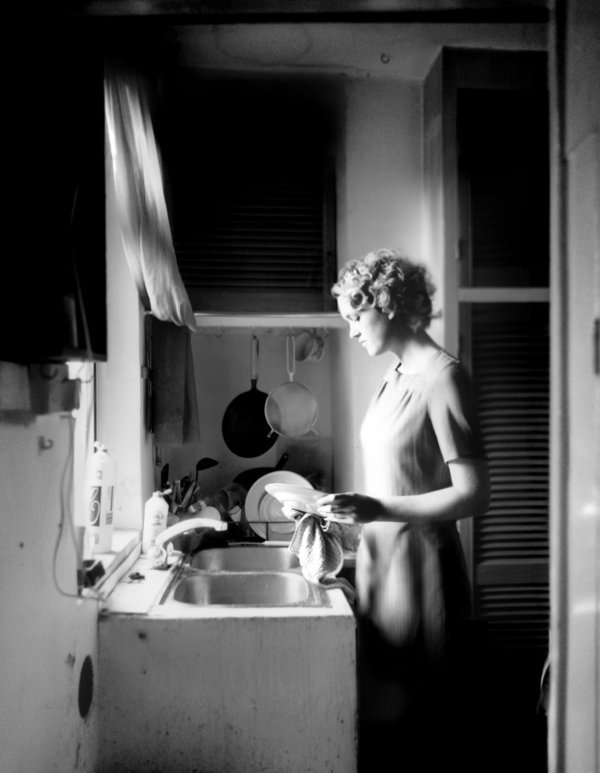
Tom Hunter, Woman reading a Possession Order, 1997.
© Tom Hunter. Mit freundlicher Genehmigung des Künstlers.
A woman, seen in profile, is reading a letter by a window. As light pours in, her skin is luminous in chiaroscuro. Even with few clues for context, this is unmistakably a direct and deliberate reference to the painting Girl Reading a Letter at an Open Window (c. 1657) by Johannes Vermeer. Both works – the painting and the photograph – are currently on show in Dresden’s Gemäldegalerie Alte Meister.
For those who think of photography as a documentary and spontaneous medium, here is a counter example. Tom Hunter, who shot the photograph in 1997, meticulously arranged the scene to recreate a painting from the past. He used Vermeer in at least two ways. First, the formal composition exactly replicates the original painting. Second, there is the motif; the posture of the woman, her body language, even her facial expression mimics Vermeer’s painting. To construct a work like this, Hunter had to carefully select a location, props and persons, and wait for the perfect condition of light. Where Hunter departs from Vermeer, however, is with the letter.
Hunter titled the work, Woman reading a Possession Order. As it turns out, the portrayed woman and her infant are about to be evicted. The photograph is part of a series of eight works, collectively called “Persons Unknown”, that replicate works by Vermeer. Made as graduation work at the Royal College of Art, Hunter photographed his neighbours in Hackney, East London. At the time in 1997, this was a socially depressed area. A commonality among the depicted persons was that they were all squatters who had received a letter from the city board addressed to Persons Unknown, telling them they were going to be evicted – hence, Woman reading a Possession Order. While the situation of this unnamed woman appears somewhat bleak in light of this letter, Hunter does not emphasize the miserable state of his sitter, but instead places her in a scene imitating a painting by Vermeer to transfer some of the painting’s heroism and status to her. On his own admission, Hunter wanted to show “the dignity of squatter life – a piece of propaganda to save my neighborhood.”
Hunter thus replicated an iconic composition and motif from the past to address social injustice in the present (mind you, 1997). In doing so, he seems to rely on the fact that the imagery of Vermeer – and related Baroque classics – conveys a sense of timeless, universal beauty. And that one can receive the generosity of this effect by simply imitating the harmonious form and structure. Hunter was also not the first – nor last – photographer to borrow from Vermeer. Consider, for example, Alfred Stieglitz’ Sun Rays—Paula, Berlin (1899) or Nicholas Middleton’s After Vermeer (2000).
In many ways, Hunter does seem to capture Vermeer’s effect. Looking at his photograph, there are hardly any clues telling us that the woman is, in fact, a squatter. While the photograph itself leaves enough space for the imagination, the title supplies us with concrete details. All of a sudden, the image tells a story of a local drama of social injustice and of people’s negative associations with squatters, which Hunter, so it seems, attempted to counter with the positive associations attached to Vermeer’s imagery.
Vermeer’s Girl Reading a Letter at an Open Window gives rise to an effect that is not aimed at anecdote, but, rather, at sharing with us a feeling of what it means to be in the world. It is of this world, not because it depicts a real-life situation of a seventeenth-century woman in Delft (which it probably doesn’t do anyways), but precisely because it distances itself from a specific context. Once this work left Vermeer’s easel, it remained unaffected and untouched by the changing social situations around it and the turmoil of history, even though parts of the canvas were overpainted (as the new spectacular restoration of the work reveals). It turns inwards – to borrow a fitting Vermeer cliché – and this is not an escapism or a denial of the surrounding world, but an expression of what it can mean to be in the world and of the unbound freedom of the imagination. This is what gives Vermeer’s painting a timeless character.
Hunter copied the formal beauty of Vermeer’s image and added details from the real world by informing us about the social predicament of his sitter. In his photograph, we see a woman that belongs both to the sphere of beauty – and boundless imagination – and the real world with all its shortcomings and limitations. While she is socially unequal in this world, she is aesthetically equal in the world of art. Hunter here neutralizes injustice of our imperfect world, at least in the imagination. Perhaps at the heart of his work lies an implicit critique of the hierarchies of representation. Does the depicted woman stand for that which is doomed to remain impossible in this world and – consequently – has no right to exist anywhere but in the imagination itself? Or can the power of representation and appearances be a motor behind indignation and change? Such questions feel directly relevant as we navigate our own era of identity politics and social injustice today.


